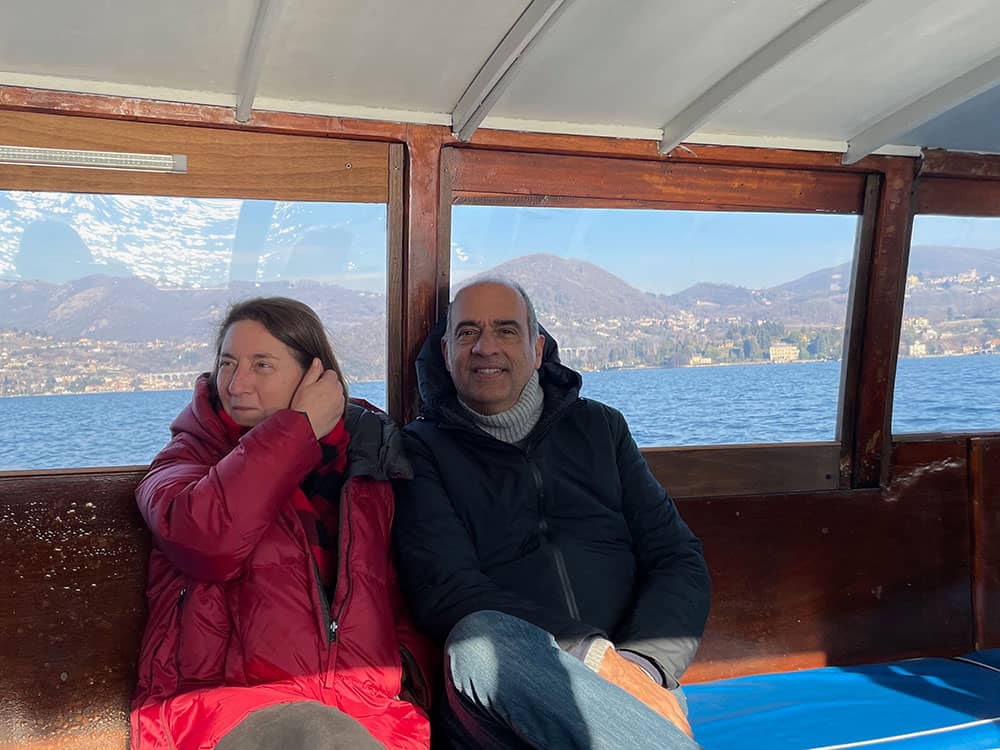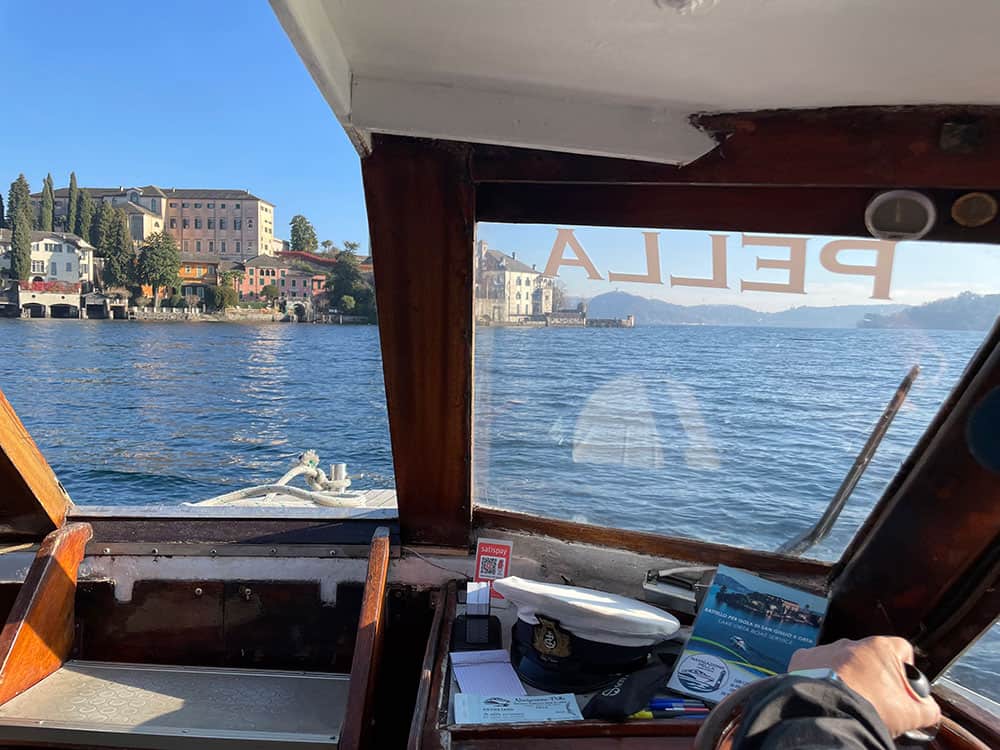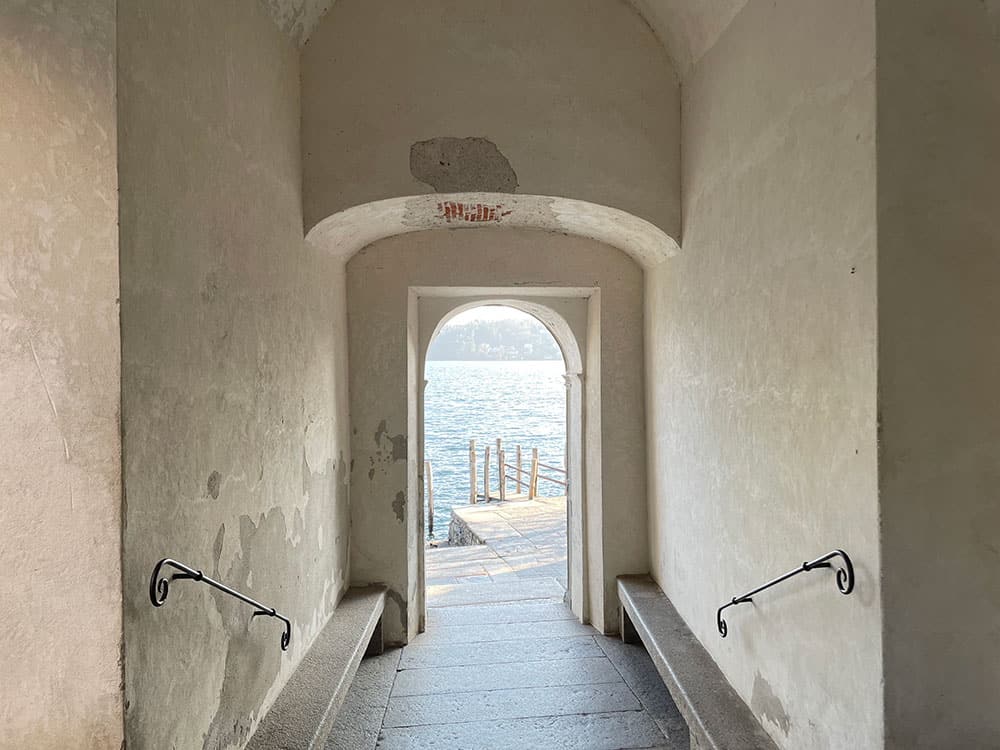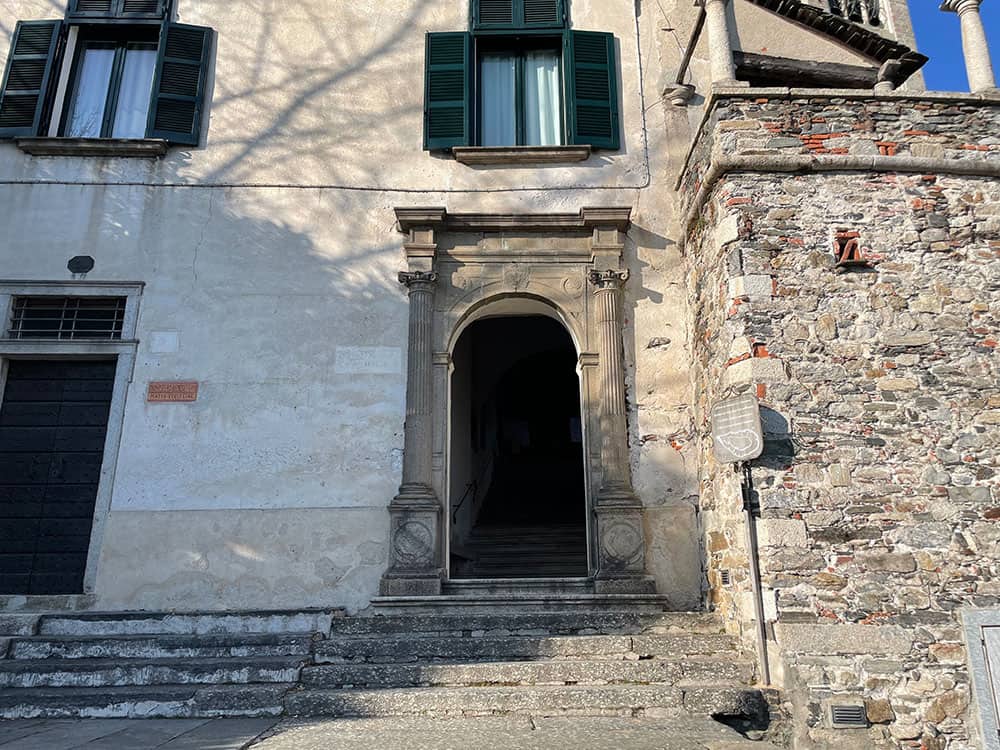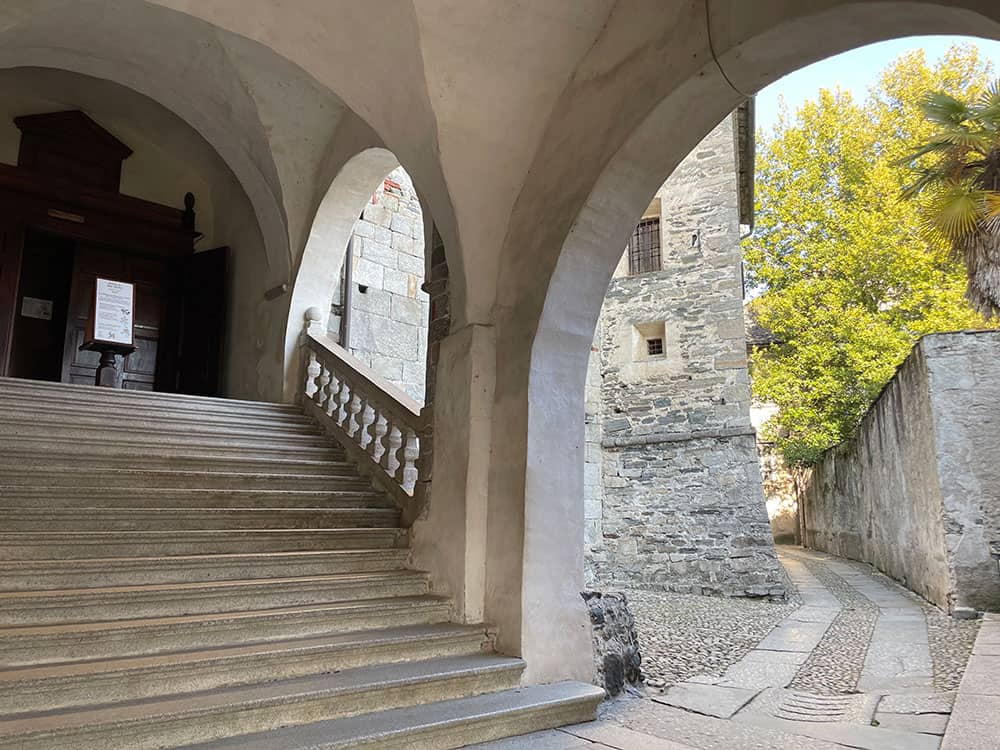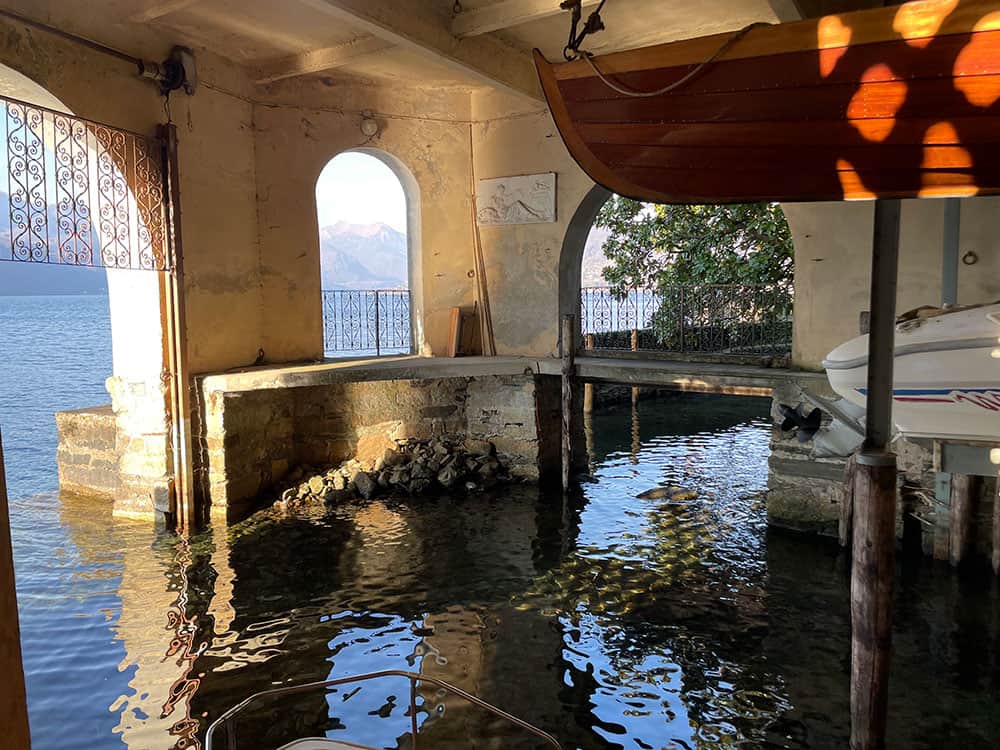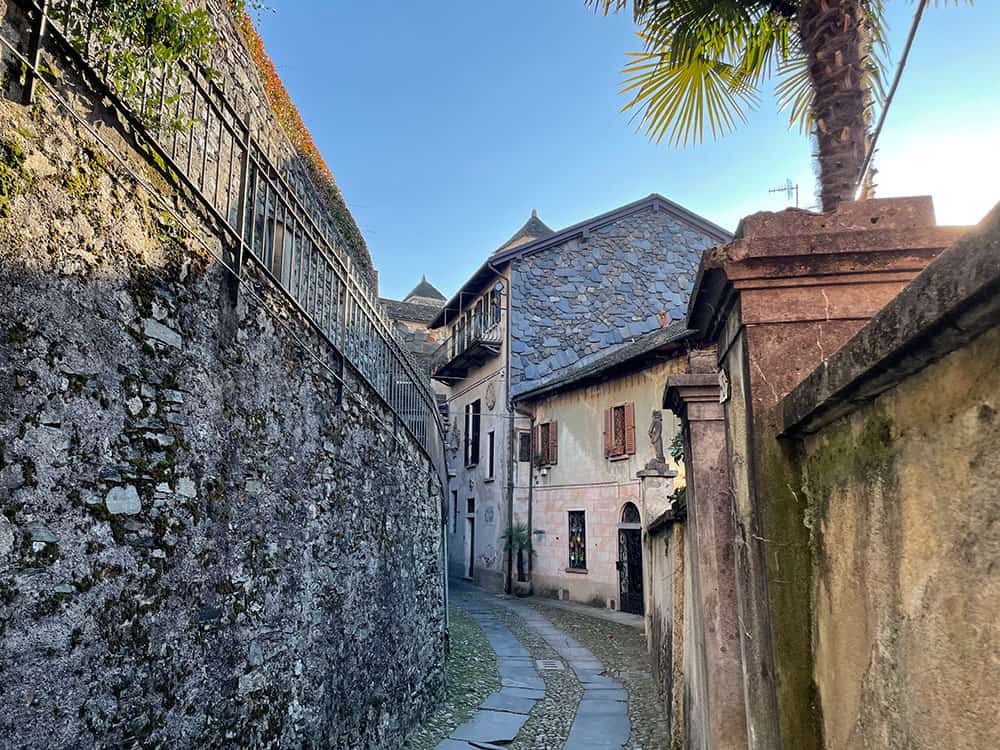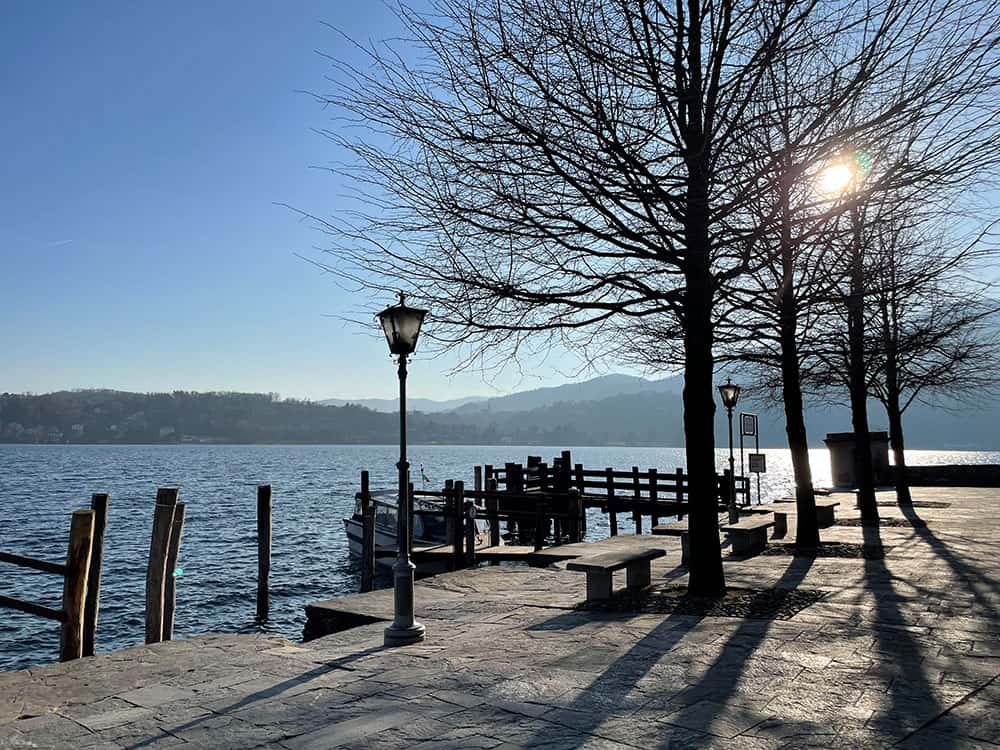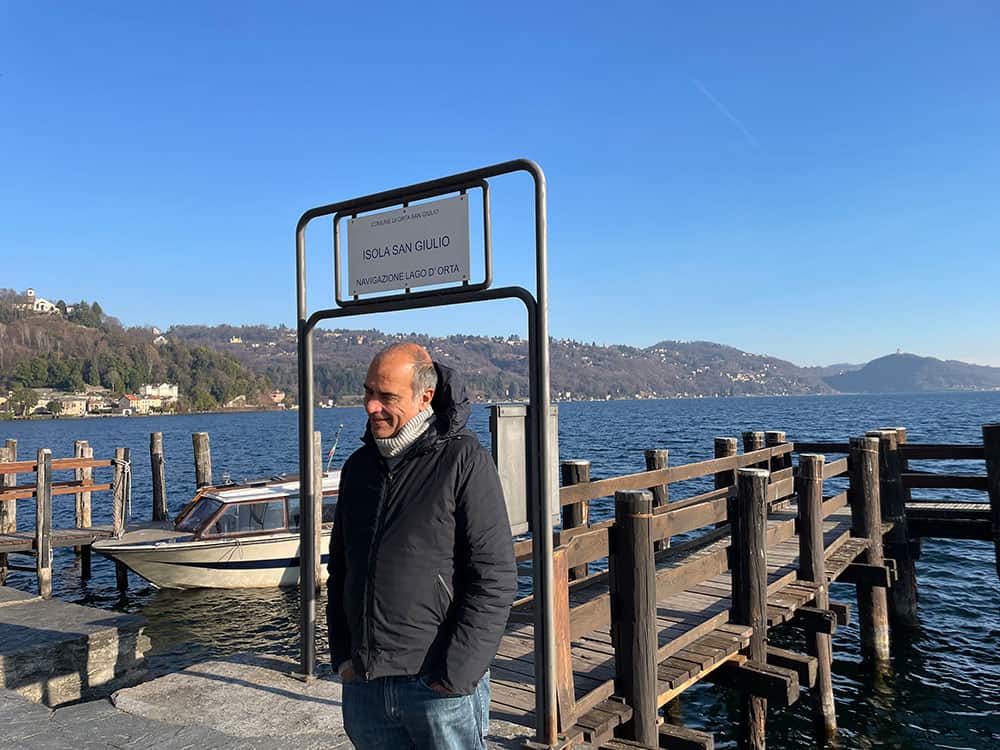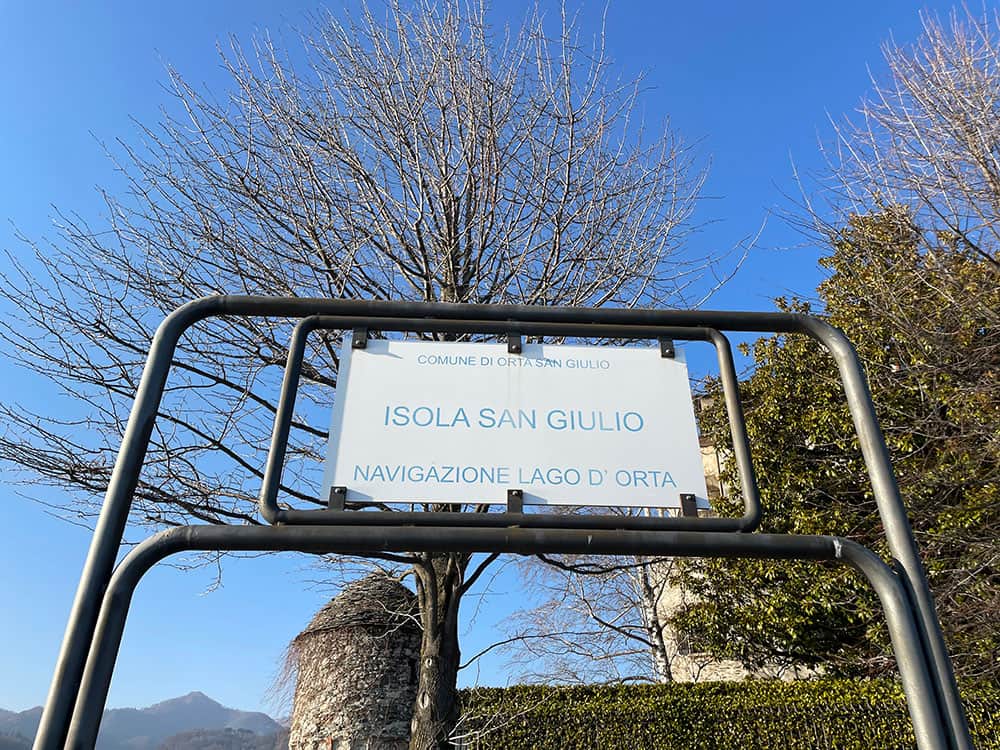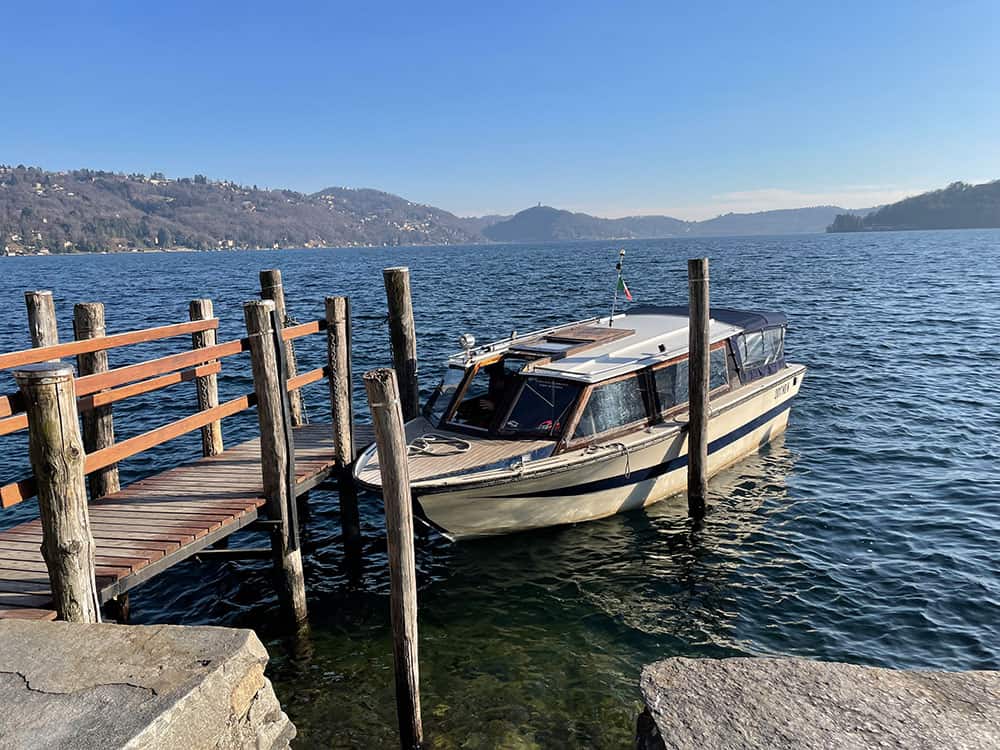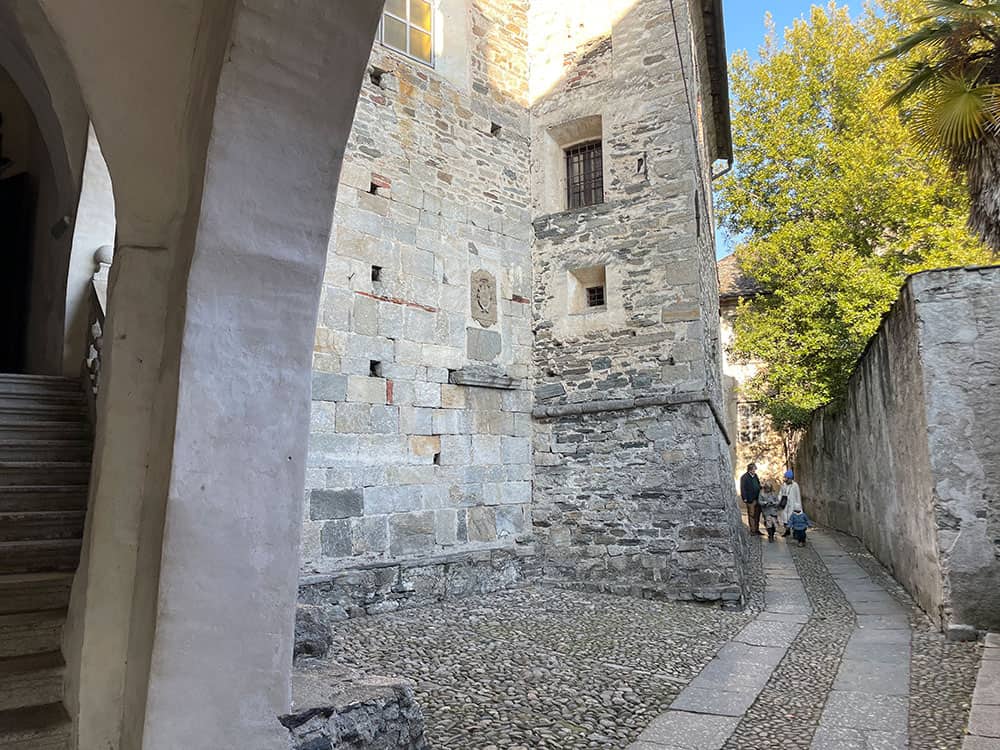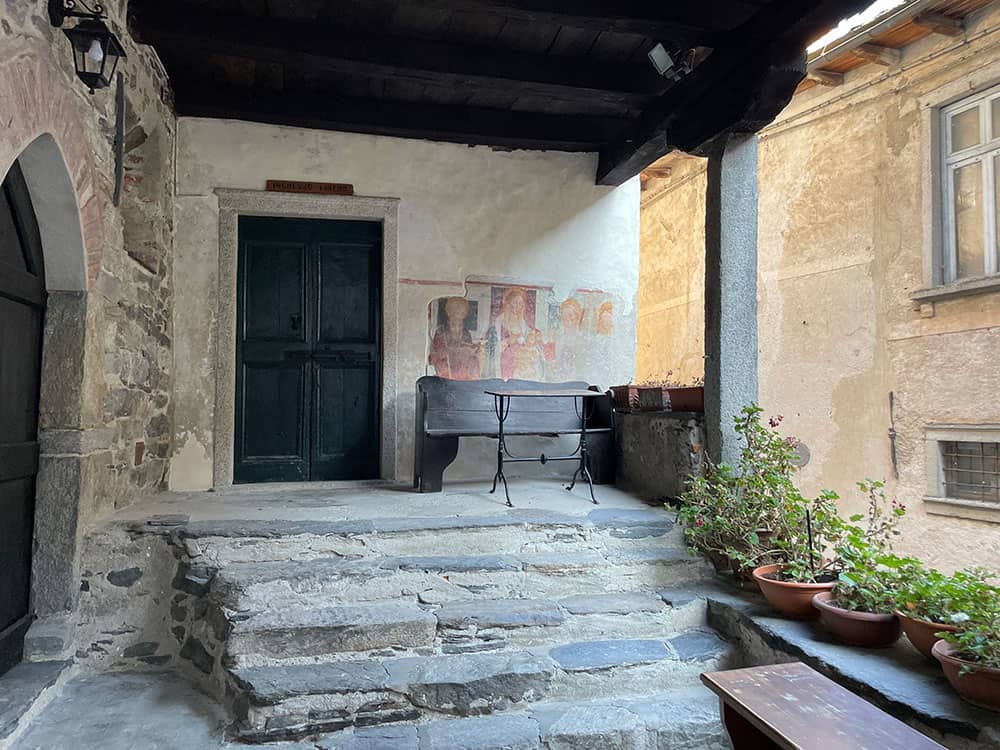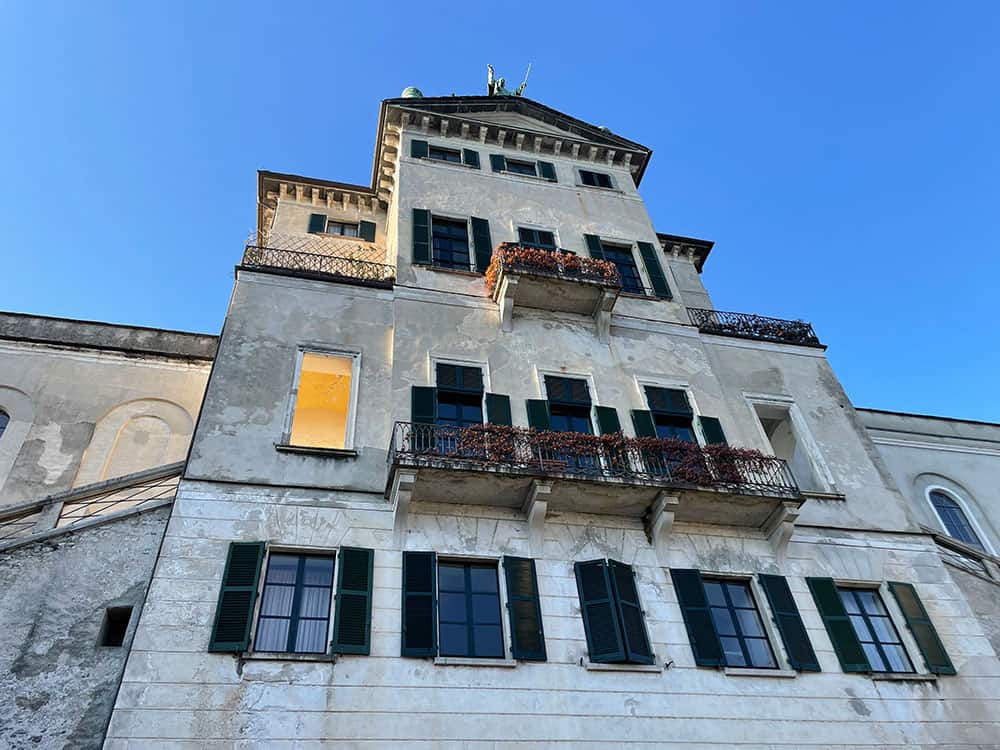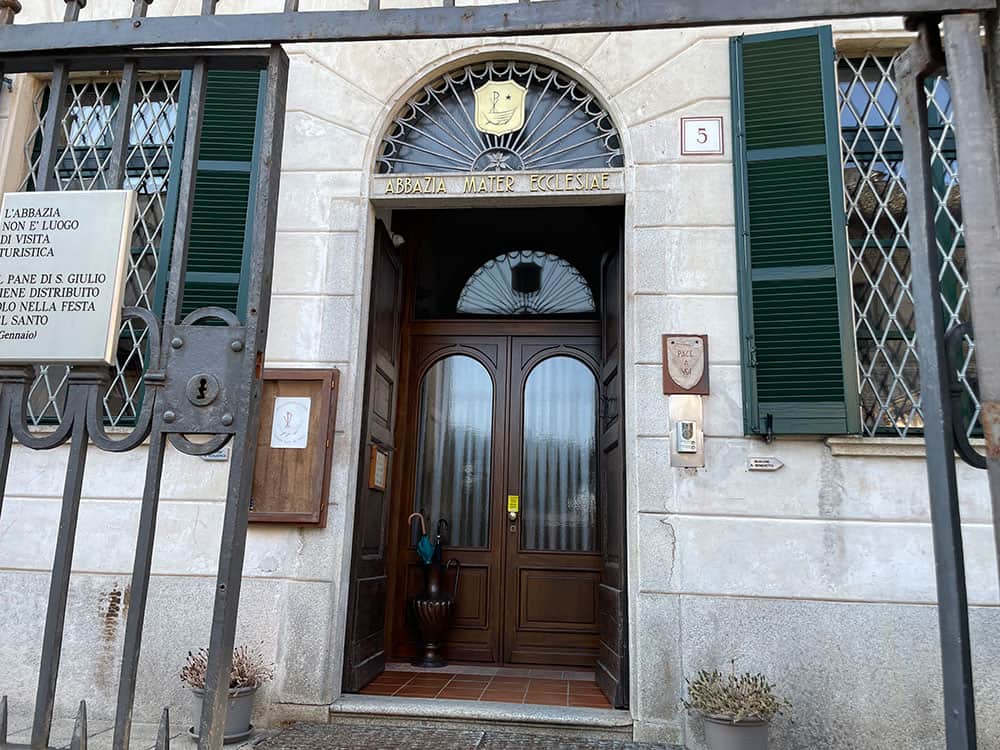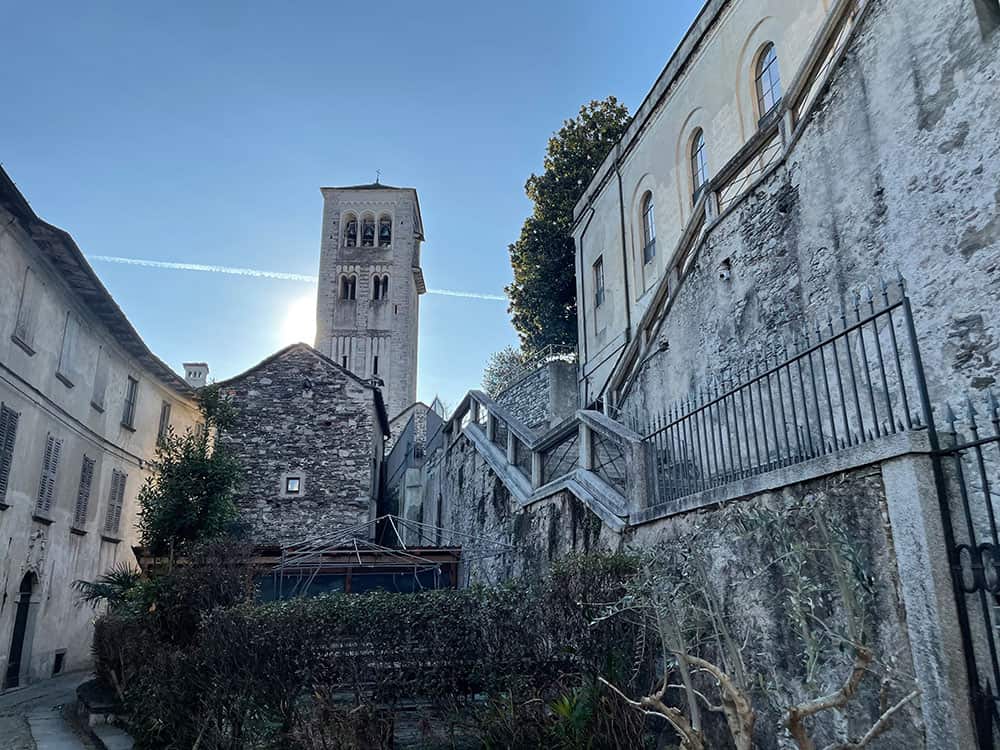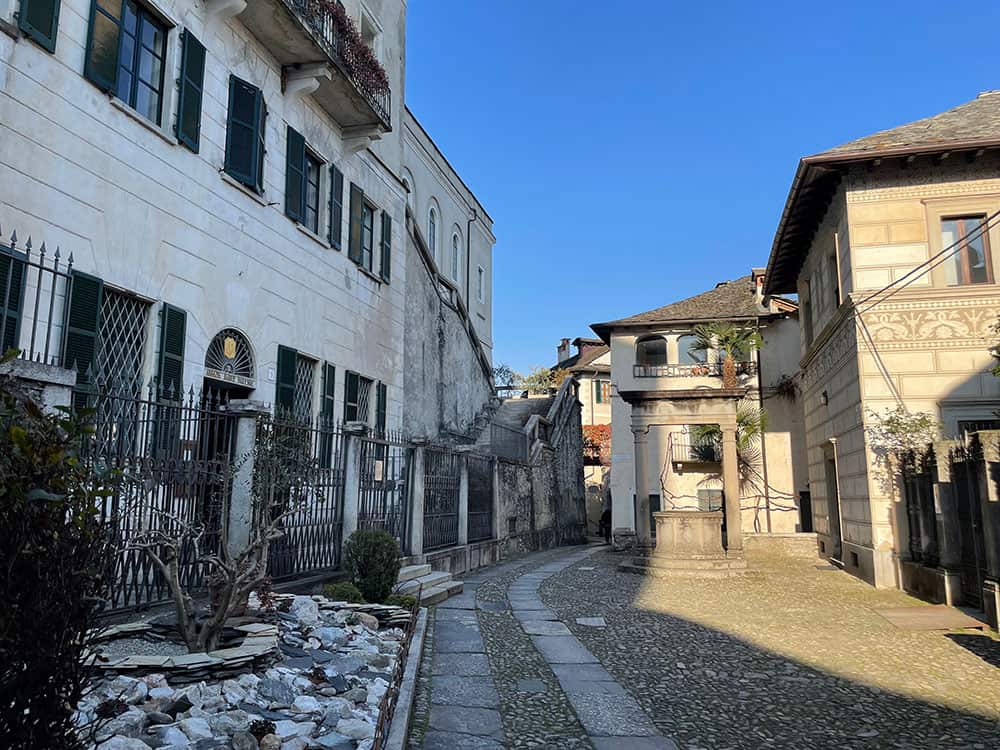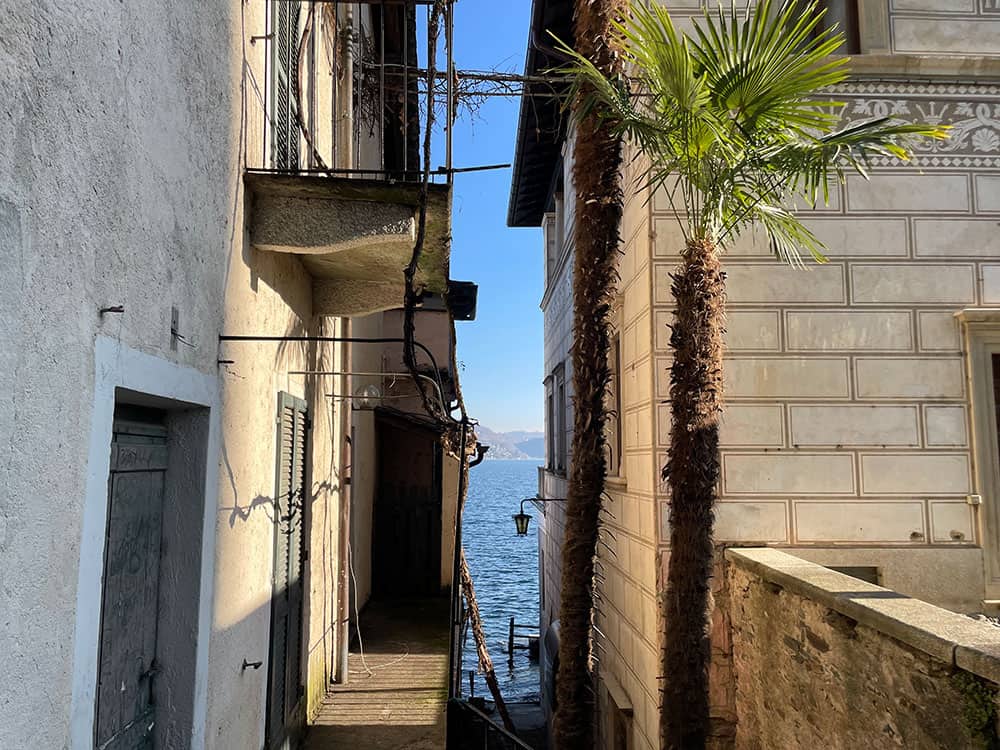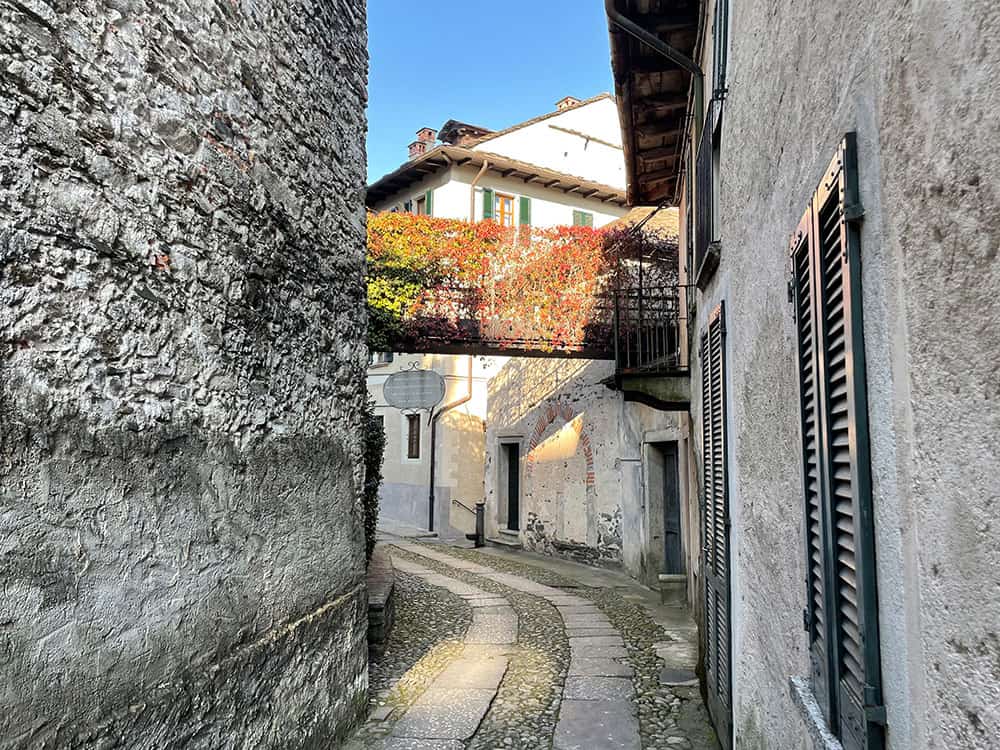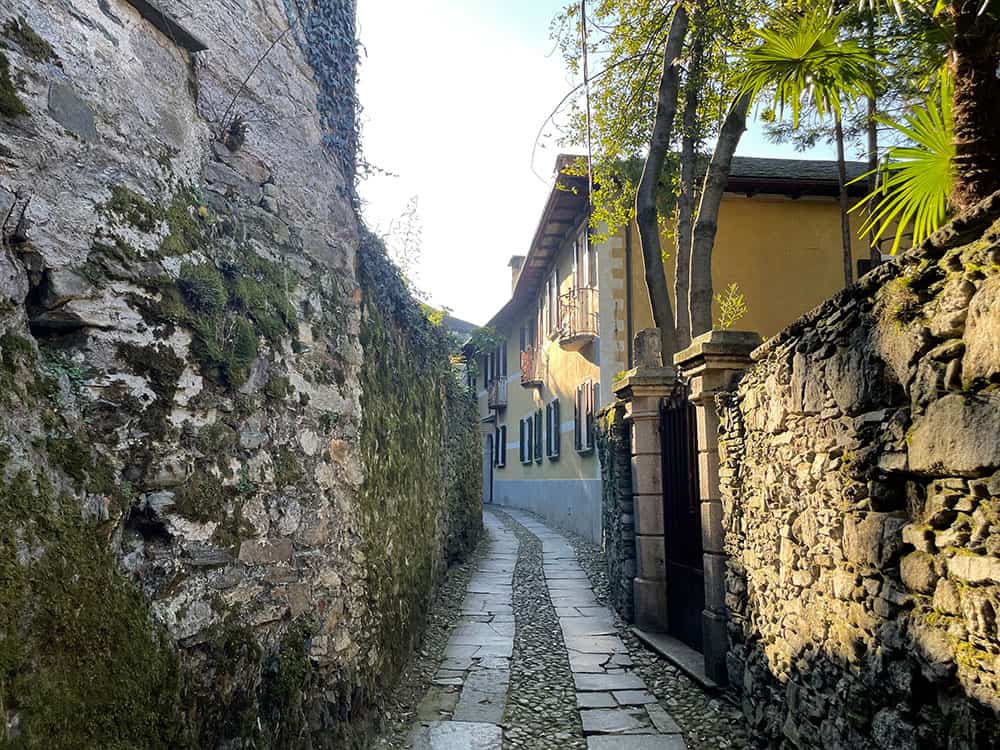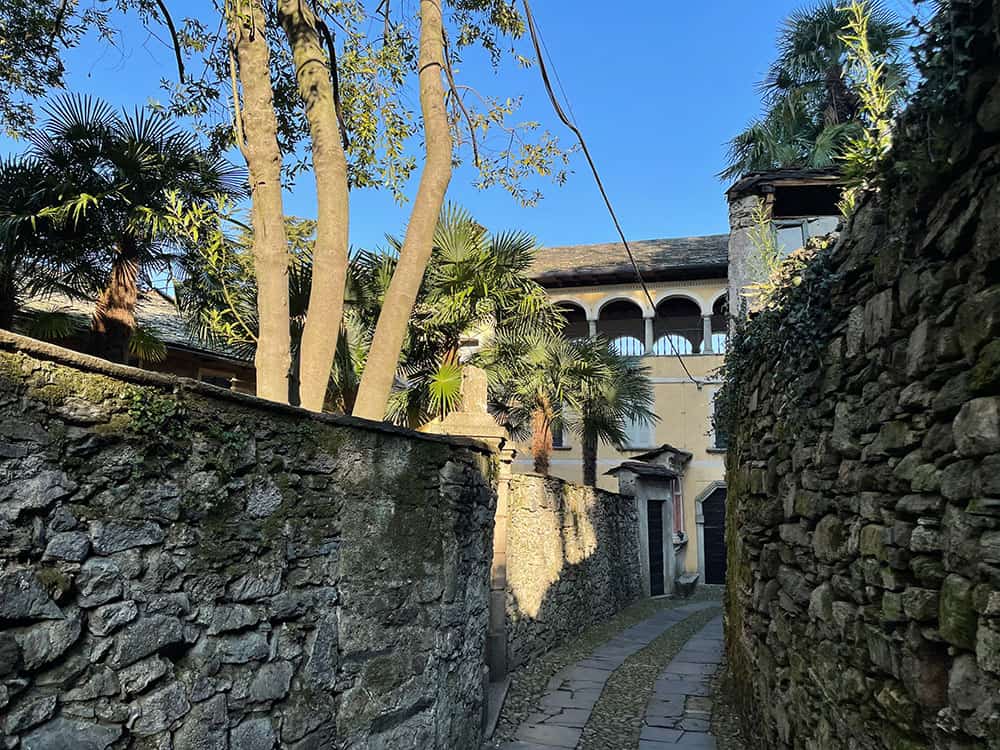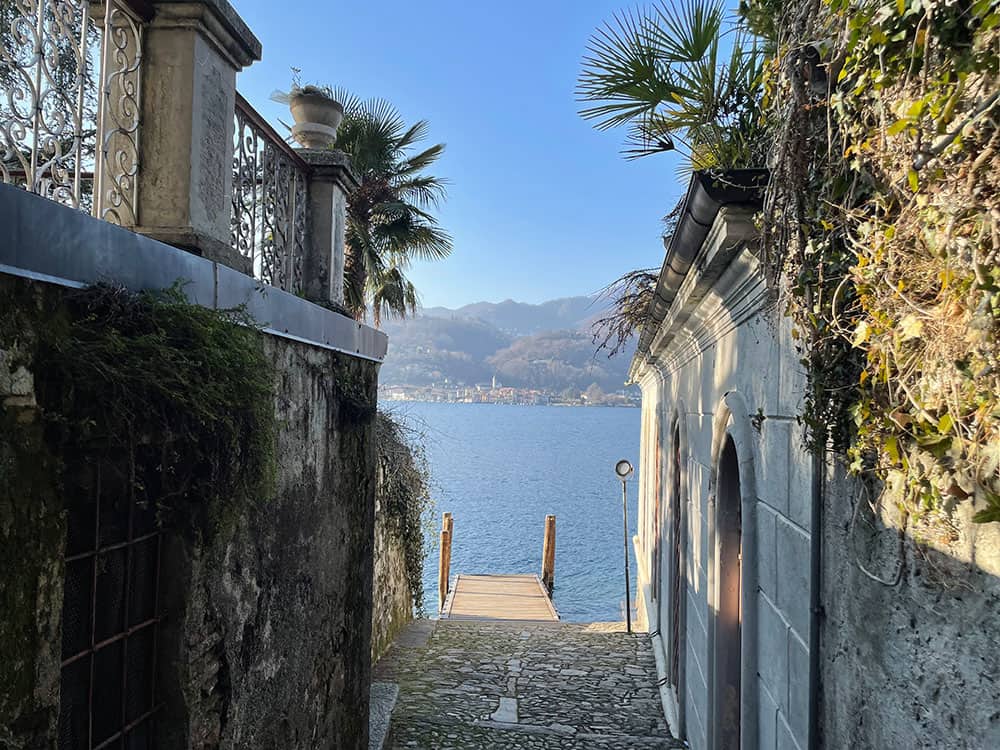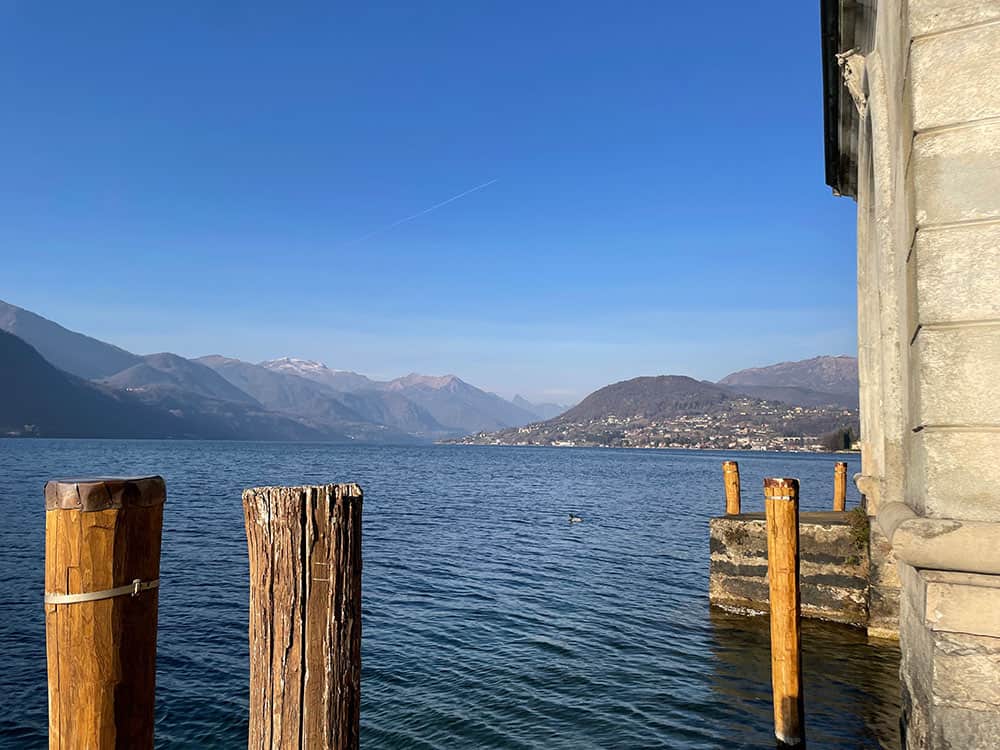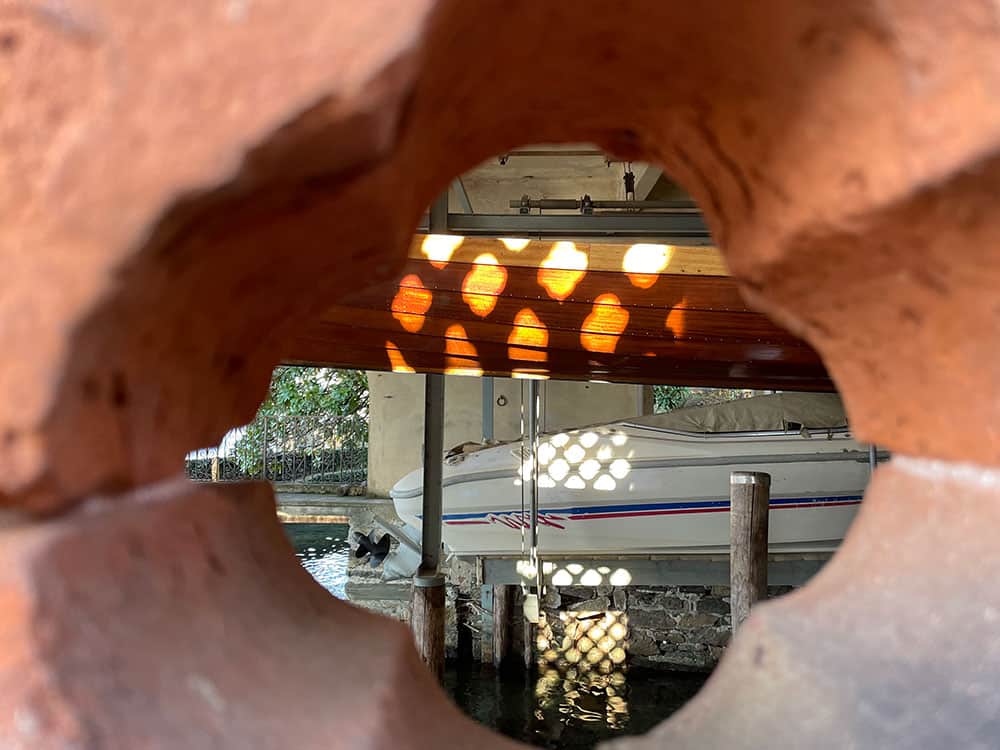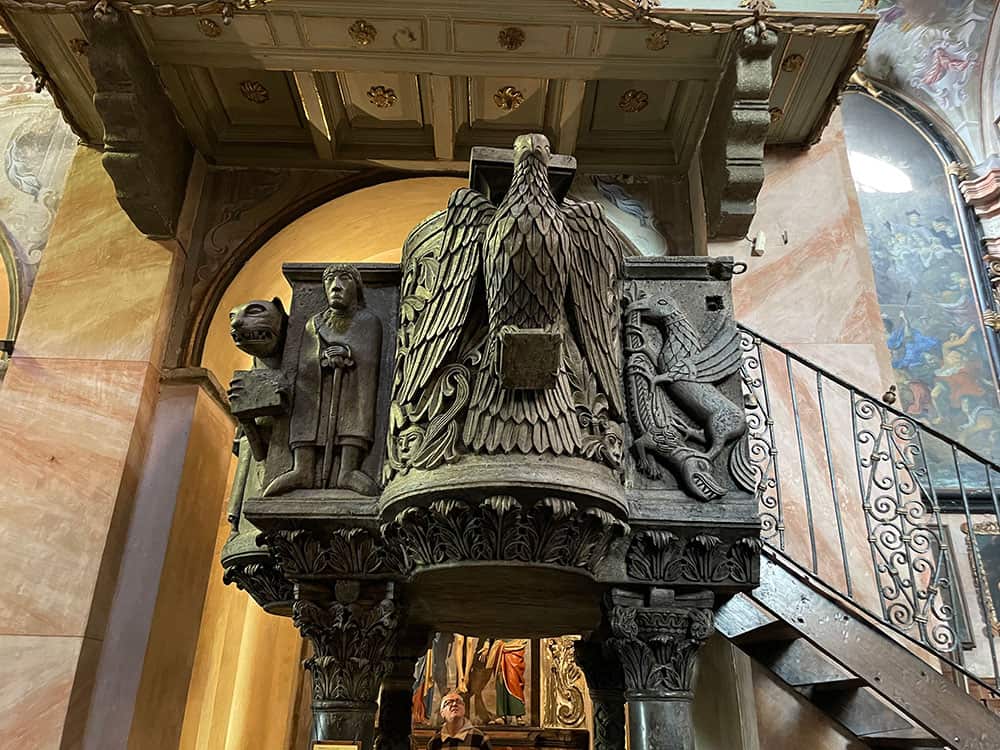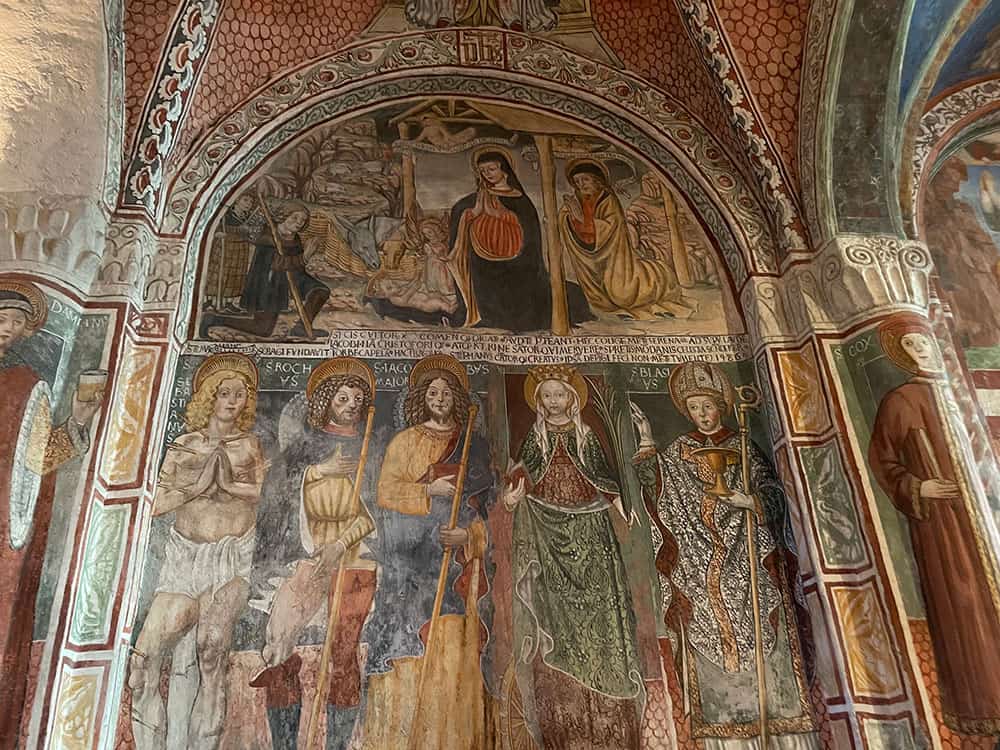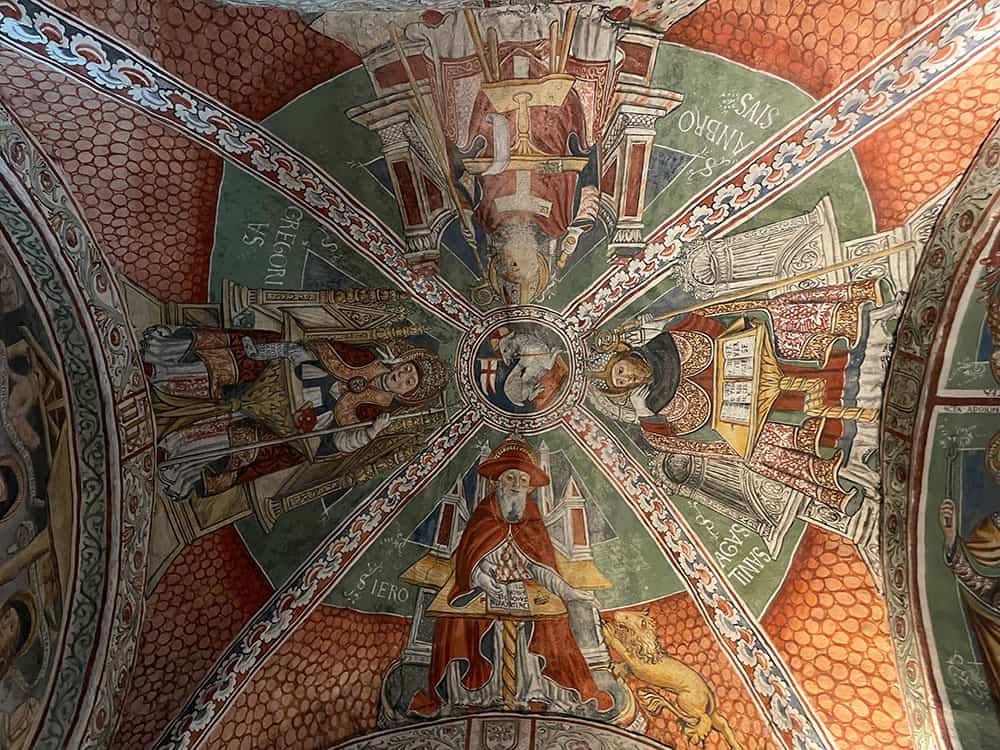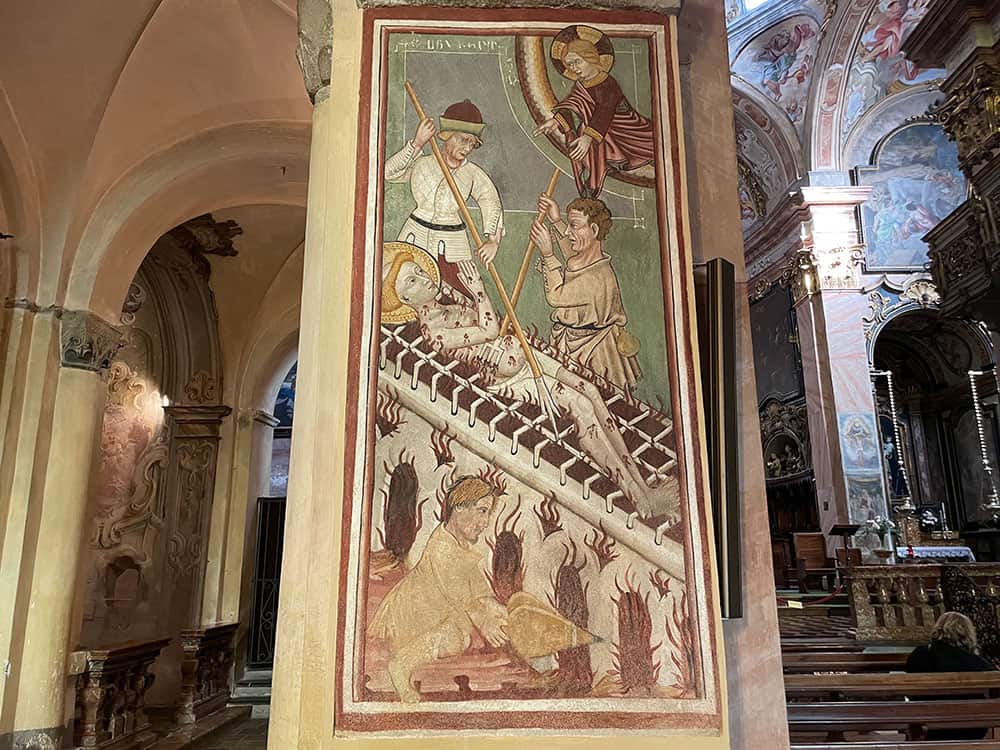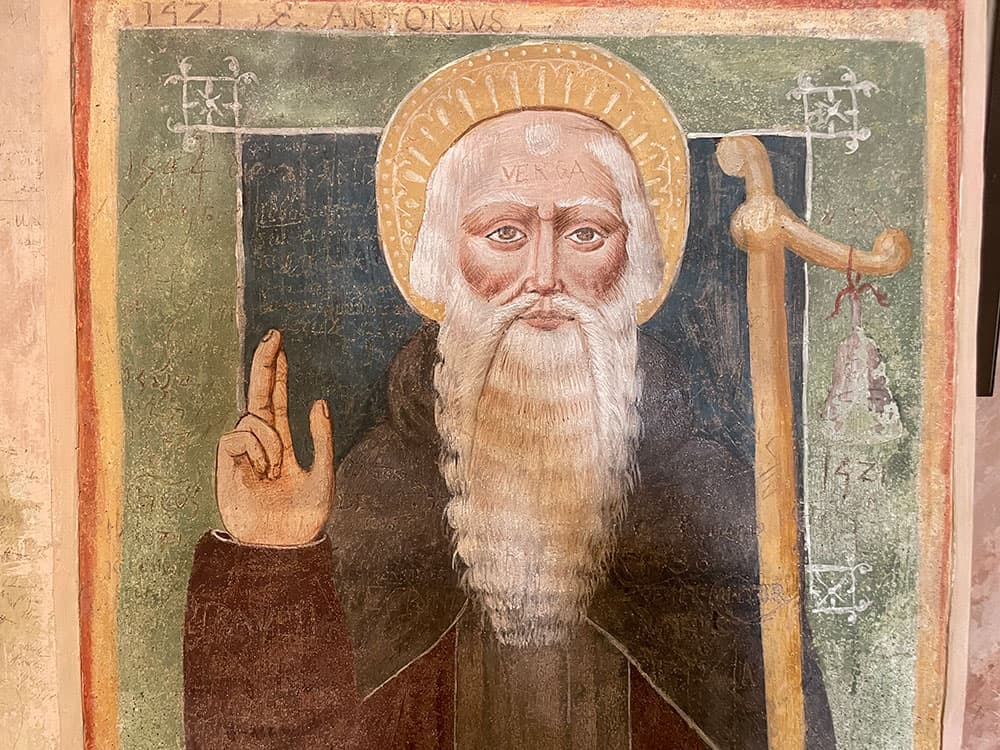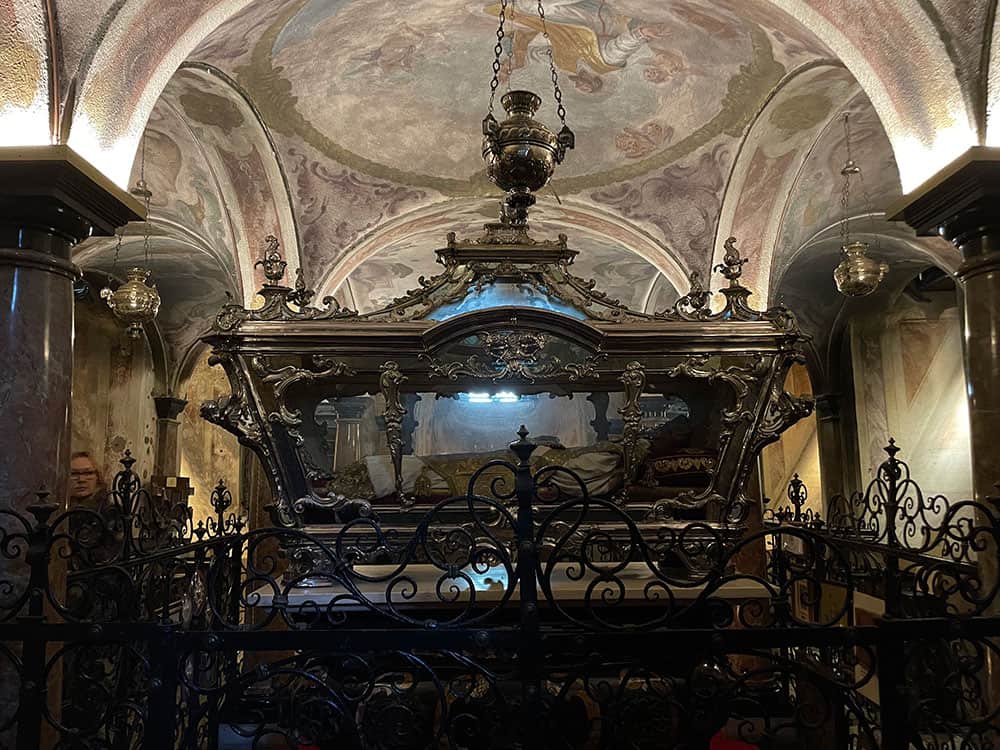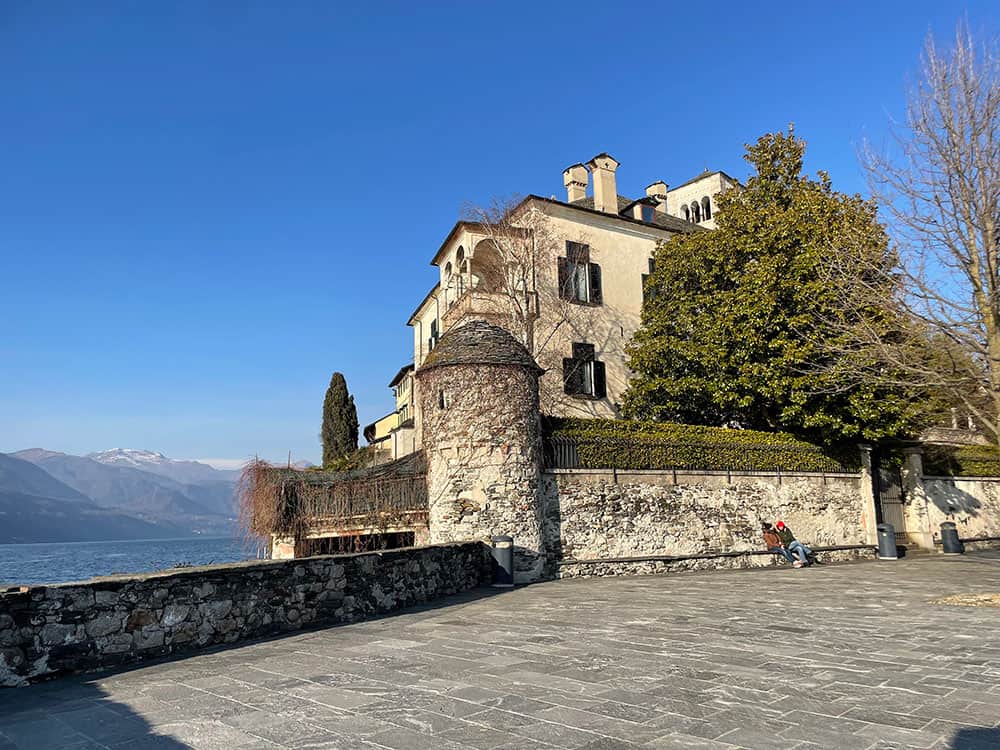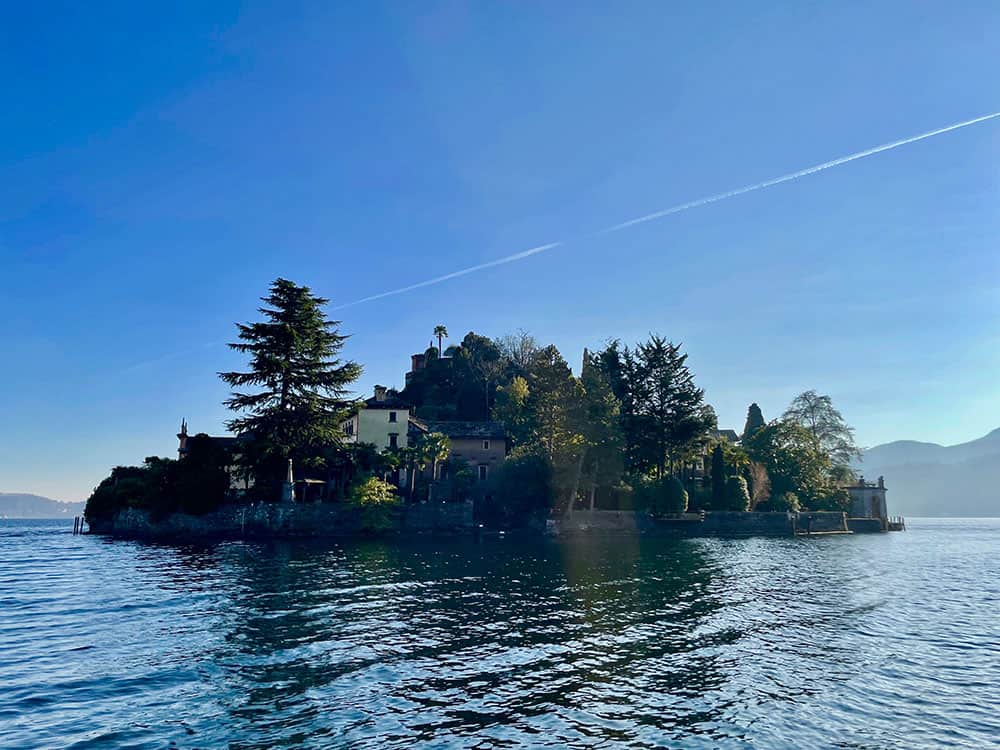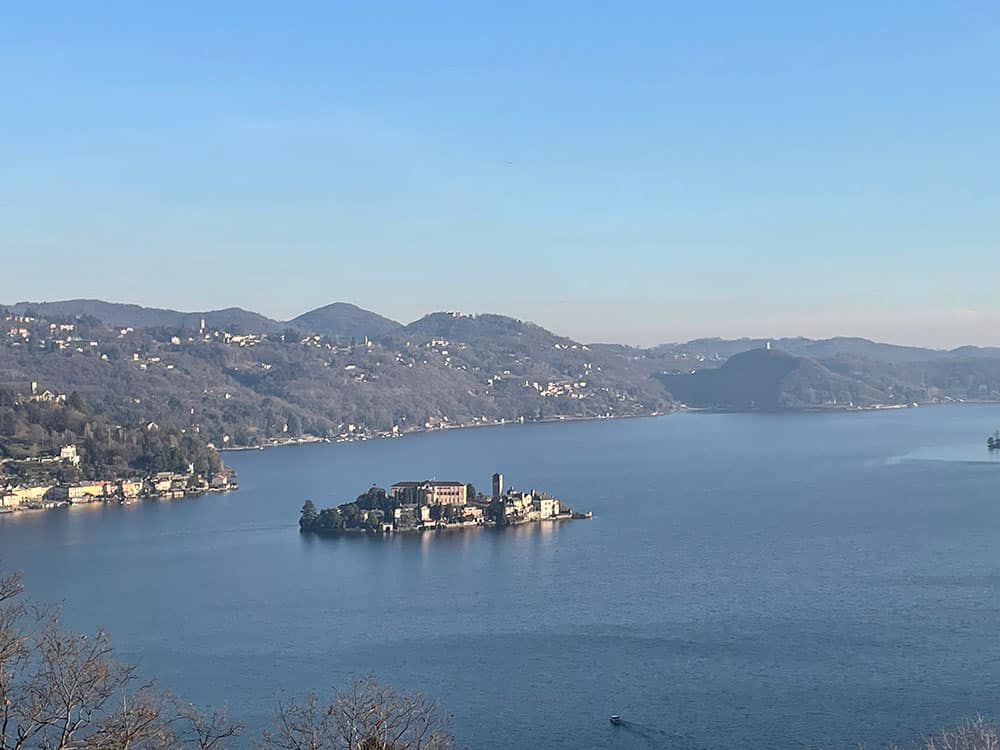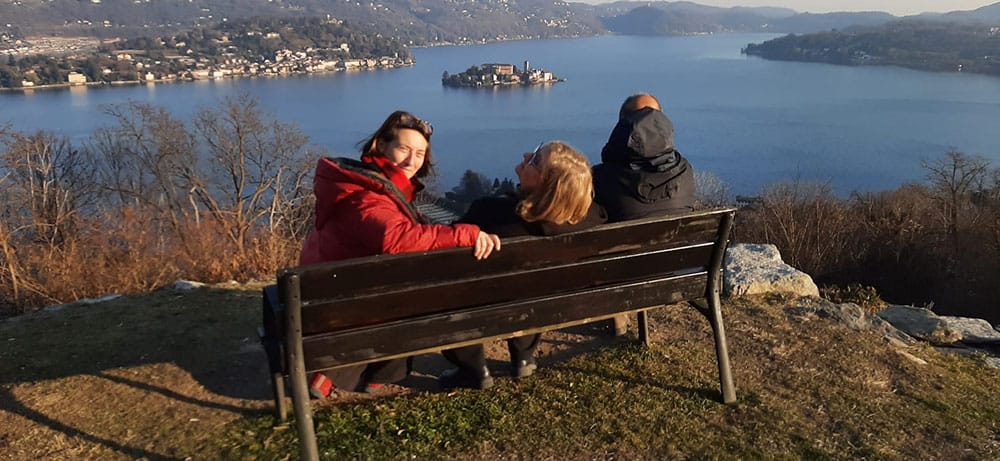We would have liked to wait for a spring day to visit the small island of San Giulio, located right in front of the town of Orta, on Lake Orta. However, since our determination to show you less crowded sites is indomitable, and we try to take you where more experienced travelers usually go, we could not resist being in the area.
We are in northern Italy, near Lake Maggiore, one of the largest lakes in our country. I do not mean to say that you will not find people here (there are about 60 million of us, and just as many visitors come here every year), but by selecting a midweek day, you may be lucky to find it practically deserted, as we did yesterday, on a perfect, cool and crystal-clear day, with the lake waters slightly rippled by a winter breeze.
When we arrived at the lake, we realized that the ferries that take visitors from the coast to the island of San Giulio were not operating, but a small wooden motorboat was waiting for us a short distance from the Pella pier. Its driver, Davide, shuttles tourists back and forth from the island, serving as a licensed taxi (I emphasize this because in Italy, it is not always the case that tourism-related activities are properly regulated, as you know).
The ticket costs €6.5 per person and includes a round trip (I will leave you with Davide’s contact information at the end, as he seems determined to stay and continue his activity for a while longer).
In just a few minutes of crossing, you reach the island, and here are two figures to help you understand how tiny this island is: it is 275 meters long and 140 meters wide, with a perimeter of about 650 meters. There is only one restaurant on the island, and only one English poetess has chosen to spend her life here for over 20 years.
In addition to this romantic lady, the island is inhabited by about seventy enclosed nuns, who, as you can imagine, are not frequently encountered, and who actually move from one place to another through special aerial walkways covered with climbing plants so that passers-by do not disturb their silent prayer life.
The entire area is practically occupied by the Benedictine Monastery Mater Ecclesiae, the bishop’s palace, the Basilica of San Giulio, and noble palaces and private residences once reserved for other prelates who frequented the island.
Once off the boat, the path to follow is practically mandatory: you leave the pier to reach the Renaissance stone door that frames, on the one hand, the calm waters of the lake and, on the other, the side entrance of the basilica. This access is particular because, in fact, the main entrance is only clearly visible from the water.
The first stop on the visit is undoubtedly the ancient Romanesque basilica that houses incredible treasures, of which perhaps the most suggestive and immediately recognizable is the Romanesque ambo, dated to 1110-1120, sculpted in serpentino d’Oira, a very particular stone, originally soft but hardening when exposed to air, with a dark green color that makes it look almost bronze.
The work, one of the few remaining in its kind, perfectly preserved, is inspired by the models of the Lombard (Comacine masters) and German schools and recalls the Carolingian and Ottonian presence on the island.
The ambo in ancient churches was an elevated platform from which the Word of God was read (which, according to the liturgy, symbolically descended from above onto the faithful).
The hieratic figure next to the imposing eagle is thought to represent Guglielmo da Valpiano, a Benedictine monk who in the 8th century introduced monasticism to this island, especially for the stick he leans on, whose handle is shaped like a “T”, which some scholars interpret as the “tau” or “crocia” of the abbots. Abbot Guglielmo of Volpiano, born, according to tradition, on the island, was baptized by Emperor Otto I on the island itself.
The numerous frescoes inside the basilica are of extreme interest also thanks to the graffiti that over the centuries (15th-16th-17th) have been engraved by passersby on their surfaces. We thus come to know about historical facts and popular stories, from thefts that occurred in the church to epidemics and plagues that devastated the area at that time, or even news about the Thirty Years’ War.
In an underground crypt beneath the high altar are kept the remains of St. Julius.
Once outside the basilica, the walk continues on the only narrow street that, in a loop, runs around the entire island, passing right in front of the abbey of the nuns, where a sign immediately makes it clear that it is not a good idea to try to sneak in.
I read that inside the building, the nuns run a hostel dedicated to pilgrims in search of a spiritual retreat, but it should be noted that there will be an obligation to follow the strict daily routine of the religious, which begins with the prayer at 5 am.
The walk is short: surrounded by beautiful houses and walls, it opens up from time to time to glimpses that lead to the water and private covered shelters for the boats of the villas overlooking the lake. In about ten minutes, you will find yourself again at the basilica from where you can take the boat back to the mainland.
I have resisted the temptation so far to tell you the story of St. Julius, the saint who gives the name to the island, but it is stronger than me and here it is because the stories of dragons are found everywhere, in the mythologies of every part of the world and Lake Orta is considered by many as the “Italian Lockness,” since many fishermen in ancient times saw the tails of these terrifying creatures emerge from the cold waters amid winter fogs.
The legend tells that St. Julius, a preacher and warrior born on the Greek island of Aegina and lived in the fourth century after Christ, moved to Italy with his brother Julian, settling in the Novara area where he devoted himself to the evangelization of pagans and the construction of churches. Wanting at all costs to build his hundredth church on the island, he was warned by the inhabitants of the coast because it was said to be infested with dragons and serpents.
The saint, not finding a boat and someone to accompany him, spread his own cloak on the water and walked on it to reach the island. Having driven away dragons and serpents with the power of his words alone, he began to build his hundredth church, in which he was later buried.
Inside the basilica, there are sacred sculptures representing dragons, and in the sacristy, there is an ancient wrought-iron dragon on which a bone is hung, an enormous real vertebra the size of one meter which was believed to derive mysterious creature. But probably belonged to a cetacean and was brought as an offering by some sailor who survived a shipwreck.
But in case you are traveling with children, it seems to me that it is a fascinating story to tell!
Speaking of fascinating stories, I have one last curiosity: San Giulio is the patron saint of masons, due to his activity as a builder of churches, and is often depicted with tools in his hands. The faithful recounted that since San Giulio and his brother Giuliano shared the same set of tools, which they would throw to each other from kilometers away when they were both working on the construction of the Basilica of San Giulio and that of Gozzano on the main land.
Whether you are drawn by geographical lyricism or by a thirst for legend, it doesn’t matter: don’t miss this corner of paradise trying to avoid it on weekends… you can’t always hope to be as lucky as we were!
How to get to the island:
And here is our boat captains company web site that will take you to the Island from Pella or Orta!
Betti
[socialWarfare]

